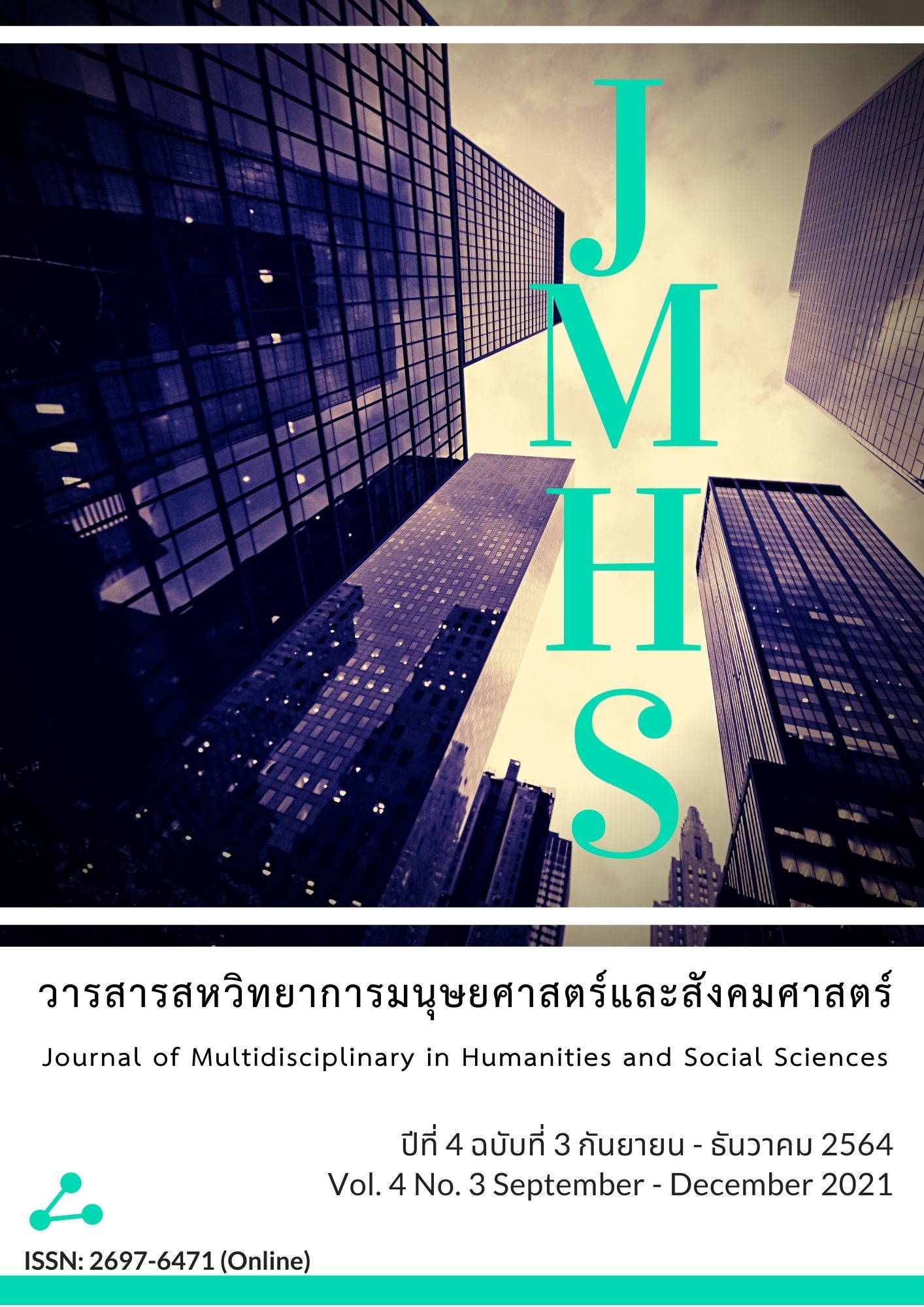Charity and the Creation of a Good Consciousness According to Mahayana Buddhism.
Main Article Content
Abstract
The purpose of this article was to show the goodness and awareness of Mahayana Buddhism. Data were collected via documents, books, research papers, and online media. It was found that charity is good deeds that are charity or good deeds are born from charity. Which consists of Jaka, compassion and wisdom that will be the root cause of the creation of good consciousness. Having a good conscience results in abstaining from any acts of violence.
Charity and the creation of a good consciousness according to the concept of the Buddha. Taking the properties of the Bodhisattva, which consist of compassion and intrigue, as a guideline for the conduct of themselves in society as a whole, starting from the family level, the community, the nation, and the world. Therefore, knowledge should be cultivated to build a good conscience in the mind. Understanding in studying good principles, morals, and ethics that are correct for use in performing duties or living together in society happily.
Article Details
Views and opinions appearing in the Journal it is the responsibility of the author of the article, and does not constitute the view and responsibility of the editorial team.
References
เกียรติวรรณ อมาตยกุล. (2539). อัตตสิกขาศาสตร์แห่งการรู้จักตนเอง. (พิมพ์ครั้งที่ 5). กรุงเทพฯ: ที. พี. พริ้นท์.
ชมรมผู้ปกครองบุคคลสมาธิสั้นแห่งประเทศไทย. (2542). เพิ่มศักยภาพเด็กด้วยการปลูกฝังจิตใต้สำนึก. สืบค้นเมื่อ 8 เมษายน 2564, จาก http://www.adhdthai.com/autistic/catalog.php?category=34
ชายแม้น, (2553). กุศลกรรม อกุศลกรรม. สืบค้นเมื่อ 5 เมษายน 2564, จาก https://1th.me/QBJX8
ซาซากิ ชิซุกะ, พระมหาพงศ์ศักดิ์ ฐานิโย (แปล), (2563). พระพุทธศาสนามหายาน: เหตุใดคำสอนของพระพุทธเจ้าจึงมีความหลากหลาย (2). ธรรมธารา วารสารวิชาการทางพระพุทธศาสนา, 6(2), 176-211.
ณัฐฐ์วัฒน์ สุทธิโยธิน. (2559). ทฤษฎีเกี่ยวกับจิตสำนึก (Consciousness) การสร้างจิตสำนึกและการปลูกฝังจิตสำนึก. สืบค้นเมื่อ 8 เมษายน 2564, จาก https://1th.me/2Mkf8
ธรรมะไทย. (ม.ป.ป). พระพุทธศาสนา มหายาน ~ Mahayana. สืบค้นเมื่อ 10 เมษายน 2564, จาก https://1th.me/F3YyM
พระพรหมคุณาภรณ์ (ป.อ. ปยุตฺโต). (2554). พจนานุกรมพุทธศาสตร์ ฉบับประมวลธรรม. (พิมพ์ครั้งที่ 34). นนทบุรี: เอส.อาร์ พริ้นติ้ง แมสโปรดักส์.
มหาจุฬาลงกรณราชวิทยาลัย. (2539). พระไตรปิฎกฉบับภาษาไทย ฉบับมหาจุฬาลงกรณราชวิทยาลัย. กรุงเทพฯ: โรงพิมพ์มหาจุฬาลงกรณราชวิทยาลัย.
สมเด็จพระพุทธโฆษาจารย์ ป.อ. ปยุตฺโต. (2529). บุญ-บาป กุศล-อกุศล. สืบค้นเมื่อ 7 เมษายน 2564, จาก https://1th.me/bEce4
สมเด็จพระพุทธโฆษาจารย์ ป.อ. ปยุตฺโต. (2537). สังคมไทย ไฉนตกต่ำถึงเพียงนี้. สืบค้นเมื่อ 5 เมษายน 2564, จาก https://1th.me/dwNaQ
สุดาพร เขียวงามดี. (2554). การศึกษาวิเคราะห์คัมภีร์สุขาวดีวยูหสูตร(วิทยานิพนธ์ปริญญาศิลปศาสตรมหาบัณฑิต สาขาวิชาภาษาสันสกฤต). มหาวิทยาลัยศิลปากร.


